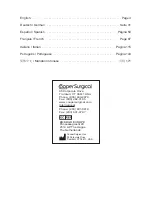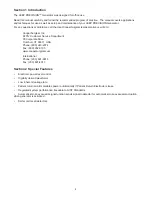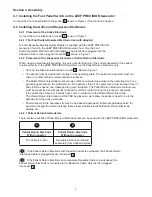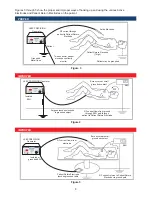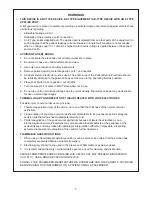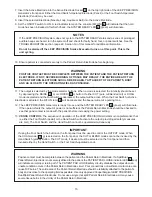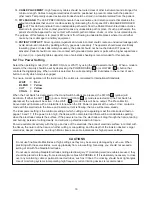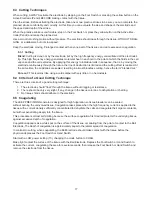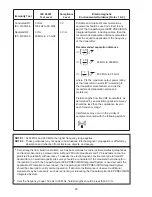
13
With electronically generated electrosurgery current, it is necessary to convert the 50/60 Hz alternating
current available at the wall outlet to the high frequency current needed for electrosurgery . This conversion
is accomplished using a high frequency generator . The high frequency waveforms are precisely controlled
for the various modes of operation . The peak average and RMS values of the desired waveforms are
generated in accordance with scientifically and empirically derived standards which are known to result in
the desired effects .
5.3.6 Fundamentals of Electrosurgery
As with any technical instrumentation or equipment, there are some fundamental principles that should
be learned in order to use electrosurgery safely and effectively . These principles apply generally to all
procedures in which electrosurgery is used . Users should familiarize themselves with them .
5.3.7 The Active Electrodes
Be sure the electrodes are securely seated and firmly held in the handpiece so that the entire electrode
shank is covered .
In general, straight wire electrodes are used for incisions and for removing fine tissue . Loops are used for
removing heavier tissue, planing, and contouring . Ball Electrodes are used for coagulation .
Keep the electrode clean while operating . Tissue shreds and debris on the electrode reduce the
effectiveness of the current and, by impeding the passage of the electrode through the tissue, slows
down the stroke . This creates unnecessarily heavy coagulation, which can cause sloughing and
delay healing .
Inspect the electrodes for proper insulation .
THIS DEVICE SHOULD BE ONLY BE USED BY PHYSICIANS TRAINED IN ELECTROSURGERY.
The practitioner who lacks experience should not attempt the procedures described in the following pages
based solely on this information; instead, the skills required should be acquired in the time-honored
preceptor manner .
NOTE:
The best initial effect is accomplished with the cutting wire in only light contact with tissue . Tight
pressure may cause desiccation of the tissue and will delay the start of the cutting effect .
5.3.8 Thermal Effects on Tissue Treated with Loop Electrodes
Thermal effects on tissue specimens may include:
• Thermal coagulation injury of the cervix, up to one-third the thickness of normal epithelium of
the cervix
• Fragmentation of squamous epithelium of the cervix attributable to long exposure periods along the
excision site, which allow heat to dissipate laterally
• Partial coagulation of the endocervical epithelium because of lateral heat radiation . The Loop
Electrosurgical Excision Procedure may produce thermal effects at the periphery of the excised
tissue and may make histopathologic interpretation difficult or impossible and, therefore, may not
allow accurate diagnosis and may obscure the need for further treatment .
Summary of Contents for LEEP PRECISION LP-20-120
Page 24: ...24 CUT mode 16 1 Power Output Characteristics ...
Page 25: ...25 CUT mode BLEND mode COAG mode 16 2 Power Output at Various Load Resistance ...
Page 52: ...52 16 1 Eigenschaften der Ausgangsleistung ...
Page 53: ...53 16 2 Leistung bei variablem Lastwiderstand ...
Page 80: ...80 16 1 Características de la potencia de salida ...
Page 81: ...81 16 2 Potencia de salida con diferentes resistencias de carga ...
Page 108: ...108 16 1 Caractéristiques de sortie de puissance ...
Page 109: ...109 16 2 Sortie de puissance à résistance de charge variable ...
Page 136: ...136 16 1 Caratteristiche della potenza in uscita ...
Page 137: ...137 16 2 Potenza in uscita a diverse resistenze di carico ...
Page 164: ...164 16 1 Características de potência de saída ...
Page 165: ...165 16 2 Potência de saída a várias resistências de carga ...
Page 192: ...192 16 1 功率輸出特徵 ...
Page 193: ...193 16 2 各種負載電阻下的功率輸出 ...
Page 199: ...Notes Notizen Notas Notes Note Notas 備註 198 ...


